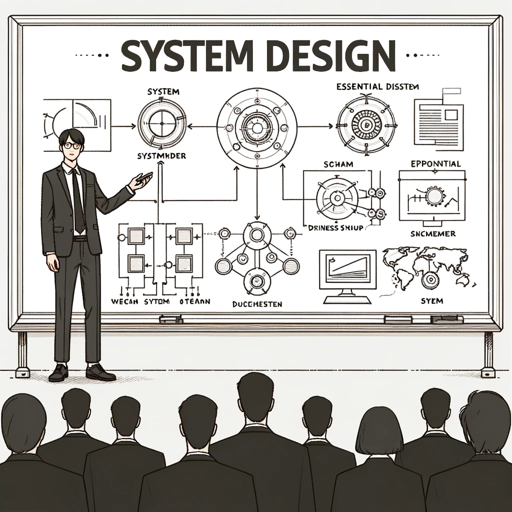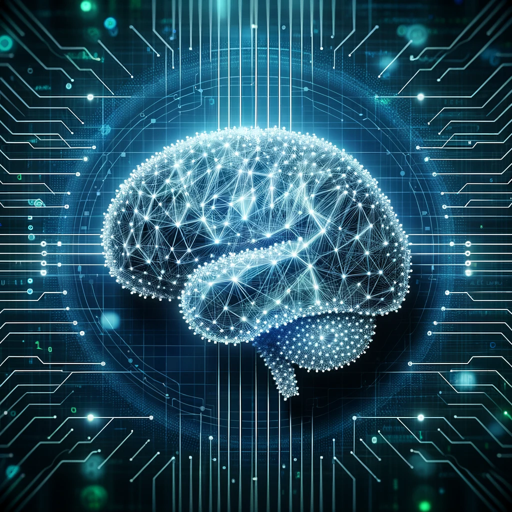Electronics Hardware Design GPT-Electronics Design Assistant
AI-powered Electronics Hardware Design Tool
Suggest a circuit for a solar charger
Explain why a resistor is used here
Guide me through designing a PCB for this circuit
Recommend components for a power supply
Related Tools
Load More
System Design GPT
This GPT will help you ace your system design interview

Design System GPT
Mentor for designers on creating modern design systems

EE-GPT
A search engine and troubleshooter for electrical engineers to promote an open-source community. Submit your questions, corrections and feedback to [email protected]

Software System Design GPT
Designs systems and guides on using mermaid in draw.io

SystemVerilog GPT
Expert in SystemVerilog and UVM, with comprehensive knowledge from various top sources.

RTL GPT
Expert in Hardware Design and Verification
20.0 / 5 (200 votes)
Introduction to Electronics Hardware Design GPT
Electronics Hardware Design GPT is a specialized AI designed to assist with various aspects of electronics and hardware design. Its primary functions include providing solutions to specific circuit design problems, recommending suitable components, and offering detailed explanations for each choice. Additionally, it guides users through PCB (Printed Circuit Board) design, ensuring adherence to industry standards and best practices. For example, if a user needs to design a power supply circuit, Electronics Hardware Design GPT can suggest appropriate components like transformers, diodes, and capacitors, and explain why each is chosen based on the circuit's requirements. It also offers tips on layout considerations for minimizing noise and optimizing performance.

Main Functions of Electronics Hardware Design GPT
Circuit Design Solutions
Example
Assisting with the design of a low-noise amplifier circuit.
Scenario
A user is working on a project that requires a low-noise amplifier to boost weak signals. The GPT can provide a detailed circuit diagram, suggest specific low-noise transistors or operational amplifiers, and offer advice on component placement to minimize interference and noise.
Component Recommendations
Example
Suggesting components for a power supply circuit.
Scenario
When designing a power supply, a user might need help choosing the right components. Electronics Hardware Design GPT can recommend transformers, rectifiers, voltage regulators, and capacitors based on the required output voltage and current, ensuring reliability and efficiency.
PCB Design Guidance
Example
Providing tips for designing a multi-layer PCB for a high-frequency application.
Scenario
A user is designing a multi-layer PCB for a high-frequency RF application. The GPT can offer guidelines on layer stack-up, trace width calculations, impedance control, and grounding techniques to ensure signal integrity and reduce electromagnetic interference (EMI).
Ideal Users of Electronics Hardware Design GPT
Electronics Professionals
Engineers and designers working in the electronics industry benefit from the GPT's expertise in circuit design and component selection, enabling them to streamline their development process and ensure high-quality outcomes.
Students and Hobbyists
Students and electronics enthusiasts can leverage the GPT's detailed explanations and practical tips to enhance their learning and successfully complete projects, from simple circuits to complex systems.

How to Use Electronics Hardware Design GPT
Step 1
Visit aichatonline.org for a free trial without login, also no need for ChatGPT Plus.
Step 2
Identify your specific electronics hardware design query or project requirement.
Step 3
Input your detailed query, specifying any particular components, circuits, or design constraints.
Step 4
Review the provided solutions, recommendations, and explanations to ensure they meet your requirements.
Step 5
Apply the insights and suggestions to your project, and iterate as needed for optimization.
Try other advanced and practical GPTs
Le Correcteur
AI-powered tool for error-free text

Accounting Solver AI
AI-powered accounting solutions.

News Summarizer Ace
AI-powered content summarization for quick insights.

Unlock The Day
Empower Your Day with AI-Driven Insights

PHP, jquery and Bootstrap helper
AI-powered coding assistance for PHP, jQuery, and Bootstrap.

Bootstrap Buddy
AI-powered coding assistance for Bootstrap and JavaScript

Hardware Engineering Advisor
AI-powered hardware development guidance

JS Helper
AI-powered tool for JavaScript excellence.

Contact Finder
AI-powered contact details for businesses.

Code Genius
AI-driven solutions for coding challenges.

Eloquent gpt
Your AI for articulate conversations.

Algorithm Ace
AI-powered Kotlin algorithm expert.

- Circuit Design
- Component Selection
- PCB Layout
- RF Design
- Power Electronics
Detailed Q&A about Electronics Hardware Design GPT
What types of electronics hardware design queries can this GPT handle?
Electronics Hardware Design GPT can handle queries related to circuit design, component selection, PCB layout, and industry best practices. It supports a wide range of applications including analog and digital circuits, power electronics, RF design, and more.
Can this tool assist with both simple and complex circuit designs?
Yes, Electronics Hardware Design GPT is equipped to assist with both simple and complex circuit designs, offering detailed explanations and recommendations for each component and design choice.
Is this GPT suitable for both professionals and hobbyists?
Absolutely. The tool is designed to cater to both professionals in the electronics industry and hobbyists, providing expert advice and practical tips that are easy to understand and implement.
How does Electronics Hardware Design GPT ensure the reliability of its recommendations?
The GPT leverages a vast dataset of industry standards, best practices, and up-to-date information to ensure the reliability and accuracy of its recommendations. It continuously learns and updates its knowledge base.
Can this GPT help with PCB design and layout considerations?
Yes, Electronics Hardware Design GPT provides guidance on PCB design and layout, including trace routing, layer management, component placement, and adherence to industry standards for manufacturability and performance.